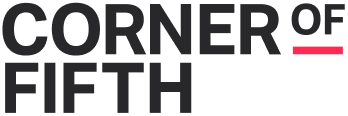The Future of Fitness Data
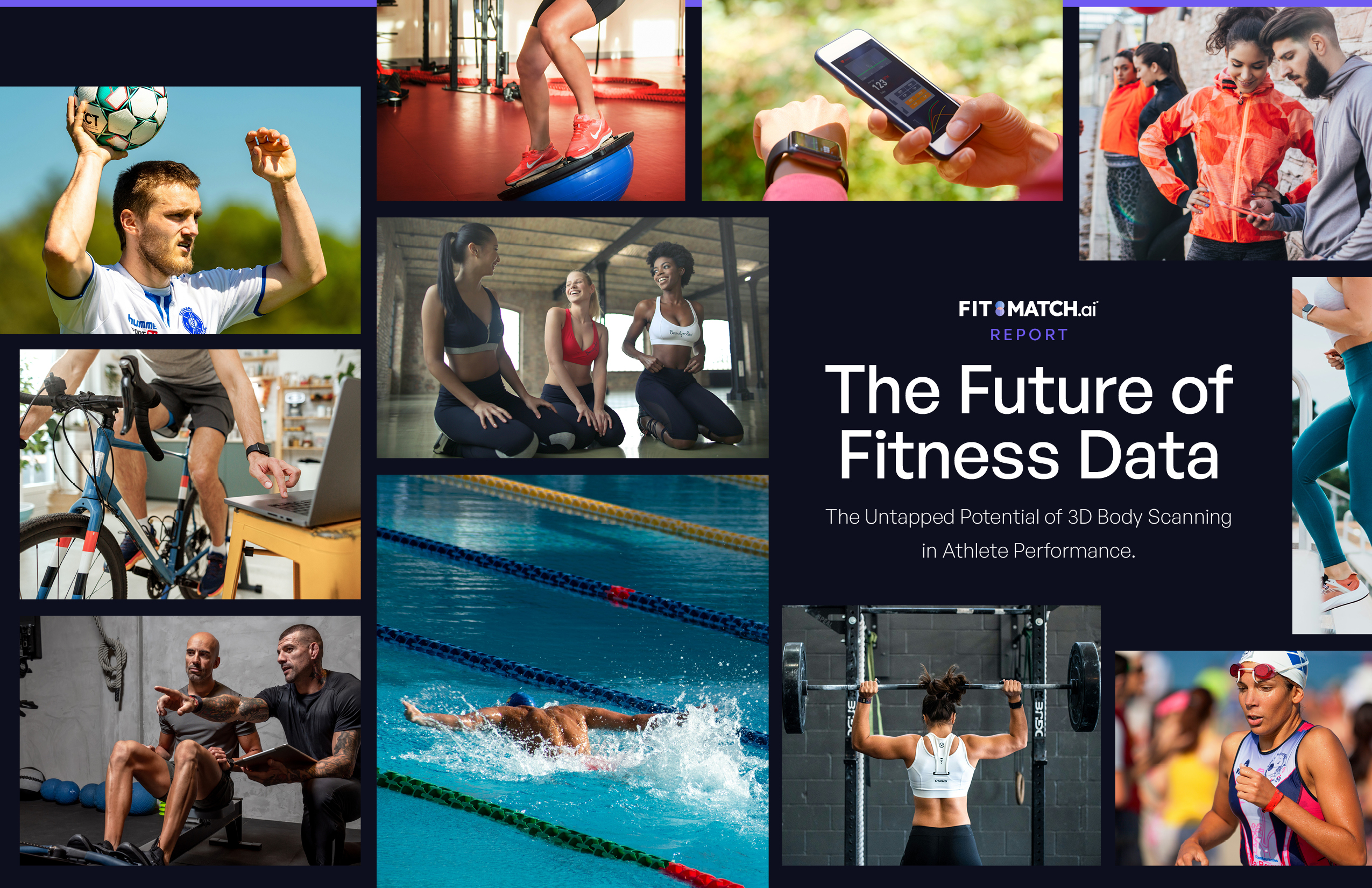
This report explores the exciting intersection of 3D body scanning and the world of athletics. While 3D scanning is making waves in healthcare, apparel, and wellness, its application in optimizing athletic performance remains largely untapped.
The data presented here unveils a clear opportunity: athletes are hungry for a more comprehensive understanding of their bodies. While traditional methods like height, weight, and additional measurements are still used, a significant portion (51.8%) of surveyed athletes currently don’t collect any data on their body type and size.
However, the desire to leverage data is undeniable. A staggering 89.4% of respondents expressed interest in using a 3D body scanning app to gather insights on their body shape and size. This report dives deeper into the specific data points athletes crave and the potential benefits of using 3D.
Survey Results: User Preferences Vary
The survey revealed that 50% of those polled are currently collecting height and weight data while 24.4% also collect body mass index (BMI) data and 25.6% track measurements. The survey showed that 15.1% said they also collect body and muscle density.
The reasons for data collection varies as respondents are looking to show progress in performance, physique and even recovery from injuries. Many want better fit in their performance apparel while others also want overall improved health. And while data collection is prevalent, there is clearly a need for something more sophisticated.
When asked if they would use a 3D app that collected data about their body size/type/shape, a whopping 89.4% said yes. Haniff Brown, Founder & CEO of Fit:match.ai, said the company believes “a 3D problem can only be solved by a 3D solution. It is proven that two people with similar measurements can have a different body shape that results in different fit recommendations. By taking a shoppers body shape into the recommendation process, we can accurately determine recommendations and personalize the experience.”
Regarding the profile of the respondents, 90.6% described themselves as amateur/enthusiast while the remaining said they were professional or semi-professional.
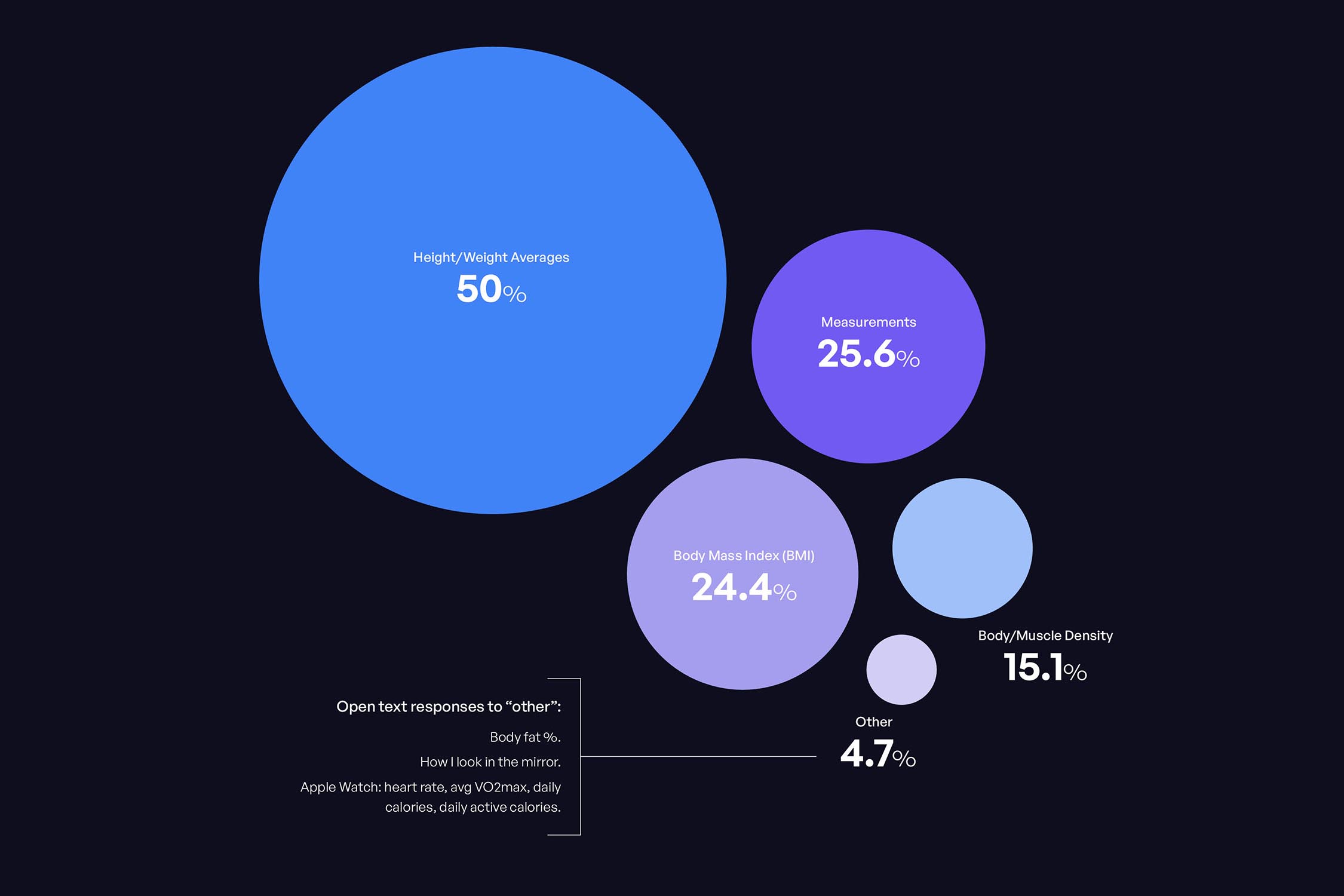
By activity, running topped the list at 41.9% and was followed by weightlifting with 34.9%. Other top activities included soccer, hiking, tennis, golf, swimming, skiing/snowboarding, cycling, yoga, Pilates, barre, and martial arts. This likely reveals that many of those polled pair various activities that build muscle while harmonizing the mind, body and spirit.
One anonymous respondent noted that when it comes to health and wellness, “incorporating every aspect (physical health, mental health, nutritional components, and other lifestyle factors) is vital, especially when the goal is to optimize performance, ensure body longevity, and see overall growth and improvement.
Danica Doble, a 22-year-old fitness enthusiast who has been involved in the fitness industry for 10 years, said her lifelong fitness journey began by going to the gym at age 12 to manage her type 1 diabetes. As a result, she lost 50 pounds over two years. She then gained muscle and has been learning about fitness and nutrition ever since.
Doble finds enjoyment in working out, seeing results, fitting into her clothes well, and the health benefits. She emphasizes that there are many benefits to exercise beyond just appearance. She uses a calorie counting app and an Apple Watch to track her steps and believes an app that tracks body size and shape measurements would be useful because many people focus on the scale weight which can be misleading. This would be beneficial for beginners, intermediates, and advanced gym goers.
Doble said she has gained confidence throughout her fitness journey and now enjoys dressing up for the gym, which she sees as a positive thing. Regarding a body scan tracking app, she said a visual representation of progress would be motivational.
“An app that scans your body would be incredibly useful for everyone in the fitness industry,” Doble said. “There are so many people who get so fixated on the scale but forget that body scans paint a more accurate picture of your health journey. To be able to look at something and track your progress through quantitative data would help so many people who struggle with body dysmorphia see their progress. People throw their entire nutrition plan away because they can’t see their true progress in the mirror.
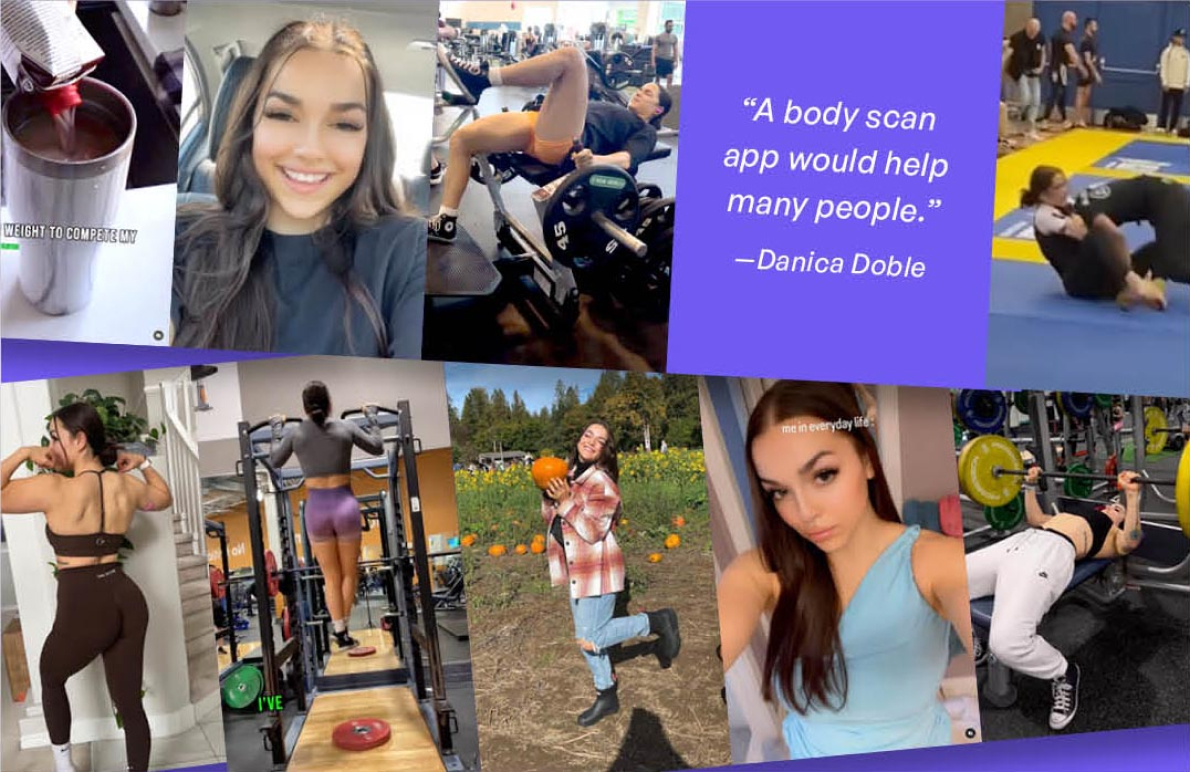
Fitness, Performance Optimization
Painting an accurate picture of one’s fitness health journey, as Doble said, was a top priority with the survey respondents. Nearly 62 percent said they want to “track progress and set goals and visualize improvements over time,” while the same percent said they were “interested in tracking my long-term fitness training and progress.”
As a dedicated long-distance runner striving to do her best, Kathryn Wicheta agreed and said, “if there was an app that could help me focus on and optimize my performance — I would definitely use that.”
Tracking performance over time is also beneficial when athletes get sidelined due to injuries. In 2017, Wicheta was benched when a sports-related illness, rhabdomyolysis, led to renal failure and a pause in her racing career. She re-emerged in 2022, running the London Marathon as part of a charity team, clocking a time 25 minutes faster than her previous best. If Wicheta had a tracking app, she would have been able to see the changes in her body that led to this astounding improvement.
In the survey, 32.6 percent of those polled said data tracking would be useful to prevent injuries and monitor fitness and also reveal recovery trends in their body. Over 32 percent said said tracking data would help them “gain valuable insights to help me improve performance, optimize training, prevent injuries, and ultimately reach my full potential.”
Many athletes noted that data tracking would be particularly useful for injury recover, through the PT process and beyond.
Erich Roepke, a professional skier, ski mountaineer, and adventure climbing filmmaker, uses several technologies in his daily routines, but acknowledged that there are gaps in what those technologies can accomplish. “The ability to see your body’s asymmetries would be so cool,” he said. “I tore my ACL 15 years ago and I would love to see the asymmetries in my body from that injury and how it has repaired.”
Wicheta agreed. “I wish I had a heat map with asymmetries. Seeing that data would be amazing.”
For many athletes, the sports they participate in are done for more than just fitness and performance. Their activities are part of their mental health wellness as well.
Wicheta’s return to the sport after her injury coincided with a change in her professional life. As a self-described introvert leading global departments at companies like Slack, and most recently, Google, Wicheta found running to be an essential outlet for the stresses she is under at work. Running became a time for necessary solitude to process that stress.
Roepke, Doble and Wicheta’s fitness journeys transcend the activities they do; it’s also about overcoming obstacles, continually pushing their limits, and finding balance in their lives. But there’s another dimension to an athletes’ commitment to their sport: body shape. And, according to the survey results, there is demand for a technology to track it.
The survey revealed that 58.1 percent of those polled said they want to “learn how varying my routine/training can impact my body shape,” while 45.3 percent were looking to optimize performance, and “understand strengths and weaknesses to tailor training plans, identify limiting factors, and maximize workout efficiency and see how it affects my body and body shape.”
It is exactly these sort of preferences that multisport athletes would likely find data tracking apps most useful. Roepke, for example, uses a variety of tracking devices, such as a Garmin and WHOOP, to monitor his workouts and heart rate. He also utilizes several smartphone applications for workout programming and data tracking, including Strava and TrainingPeaks. His focus in training is on increasing his aerobic endurance, specifically aiming to spend 10 to 15 hours per week in zone two cardio.
When asked about the potential usefulness of an app that tracks body size and shape measurements, Roepke expressed interest, particularly for fit purposes of performance apparel and comparison of body transformations over time. He saw potential value in such an app for the CrossFit community, given their focus on body transformation.
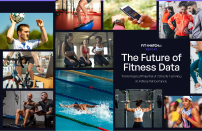
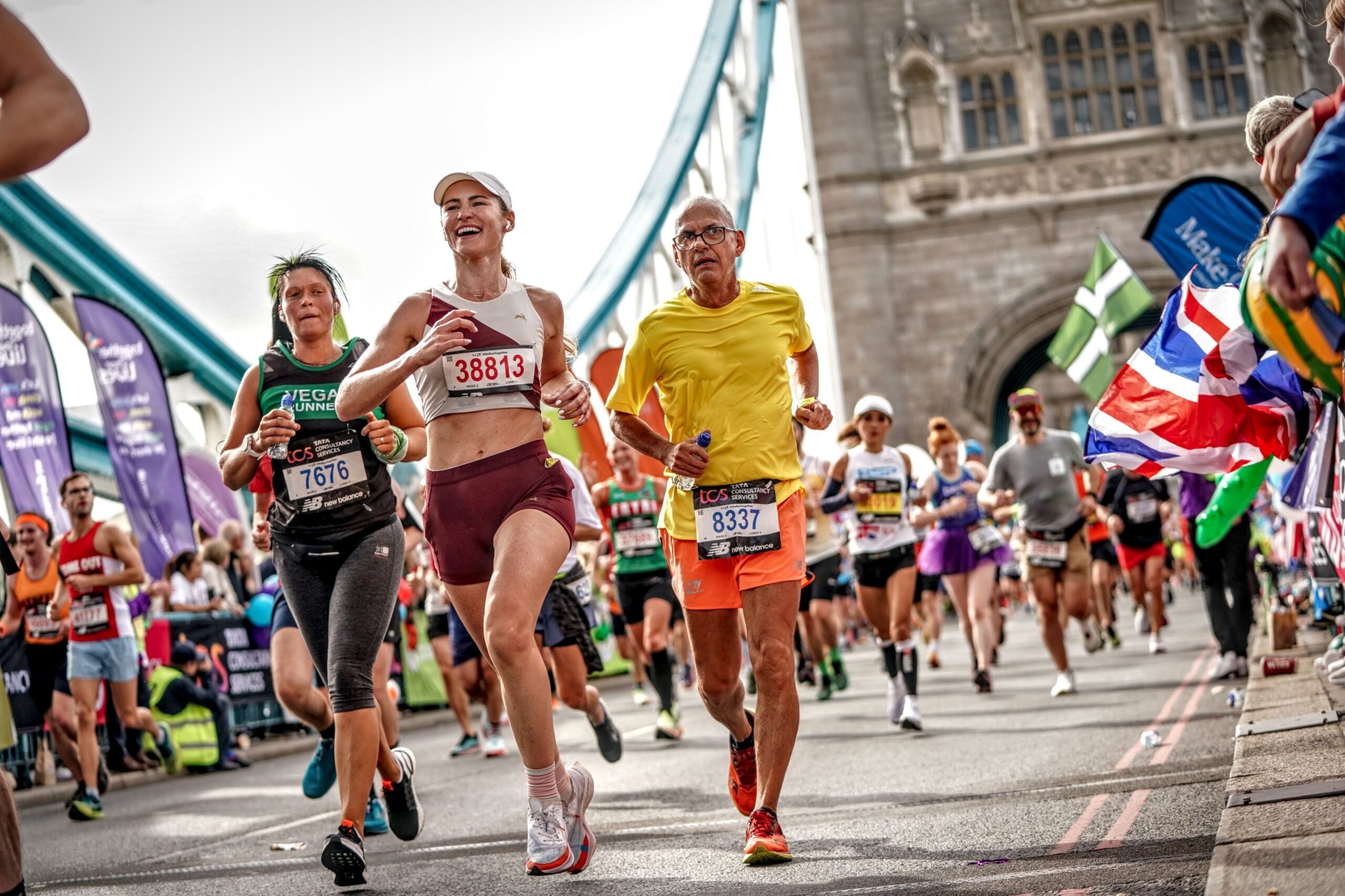
The Evolution of 3D Scanning and the Fit:match Difference
Based on the sentiment of the athletes interviewed and the survey results, a 3D scanning app can address many needs. But not all 3D scanning technology is the same, although they all share the same roots.
The first 3D scanners emerged in the 1960s and relied on cumbersome and expensive technologies such as mechanical contact probes. These scanners were primarily used for industrial applications like quality control and reverse engineering. The arrival of laser scanners in the 1980s marked a turning point. These non-contact scanners offered greater accuracy and speed, making them more versatile. However, their high cost limited their accessibility.
Over the past two decades there’s been a boom in 3D scanning technology and uses. More affordable technologies such as structured light scanners emerged, and miniaturization paved the way for handheld devices. This accessibility fueled innovation in various fields.
Fit:match has a competitive edge in the market as it uses LiDAR (Light Detection and Ranging) technology, which improves the fitting and shopping experience as well as data tracking needs. LiDAR uses lasers to capture 3D shapes with precision and accuracy, providing a more detailed representation of the human body than traditional 2D methods can offer. This is particularly important for athletes looking for accurate, data-rich measurements.
For apparel fitting and sizing, Fit:match uses LiDAR technology to create non-identifiable body avatars (or digital twins) to match consumers to their best-fitting clothing recommendations, offering a tailored, efficient, and secure shopping experience. The process is quick and comfortable for users, and it reduces inconsistencies or errors in measurement data. No more time-consuming measurements with potentially inaccurate results – the app provides a complete profile of a user’s progress with a single scan.
In response to the survey results, the Fit:match team said they were not surprised by many of the results, but said it was good to see that 54.7 percent of those polled “crave visualization tools to track changes in body shape and size over time through graphs, charts, and heatmaps.”
“It confirmed we’re on to something at Fit:match: creating features that people desire,” said Hillary Littleton, Head of Marketing at Fit:match. “What also stood out is that 41.9% of users want actionable recommendations on what to do with the insights we provide. That leads us to believe that integrations with gyms, trainers, and nutritional platforms may benefit the users with a call to action on what to do next after they discover more about their shape.”
Littleton said while there are many fitness technologies available on the market with quantitative insights, there are none that give users high-quality visualizations of their body. “The Fit:match app democratizes access to body shape data by providing ways to visualize and analyze your body and make more informed decisions about your health.”
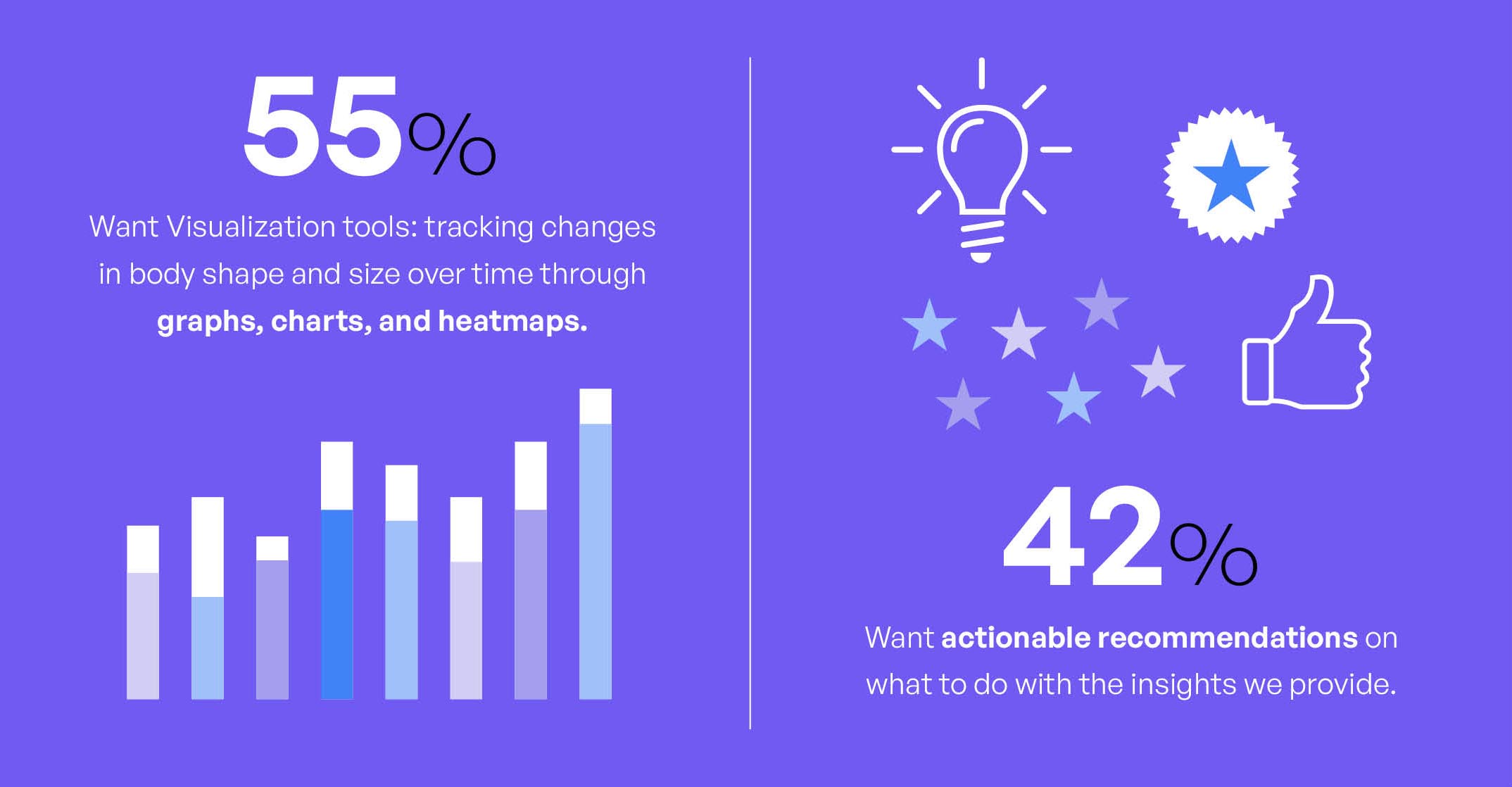
Conclusion
The findings presented in this report paint a clear picture: athletes are ready to embrace the transformative power of 3D body scanning. While traditional methods have their place, they lack the depth and detail offered by 3D scans. With nearly 90 percent of athletes surveyed expressing interest in this technology, the opportunity is ripe for innovation.
By incorporating Fit:match’s patented 3D scanning app into their training regimens, athletes can gain valuable insights into their body composition, track progress with visualization tools, and identify asymmetries that could lead to injury. This data-driven approach has the potential to revolutionize athletic performance optimization, empowering athletes to train smarter, achieve peak performance, and ultimately reach their full potential.
Furthermore, integration with existing fitness ecosystems like gyms, trainers, and nutrition platforms could provide athletes with actionable insights and personalized training plans. As 3D scanning technology continues to evolve and become more accessible, the future of athletic performance is undoubtedly shaped by data and a deeper understanding of the human body

